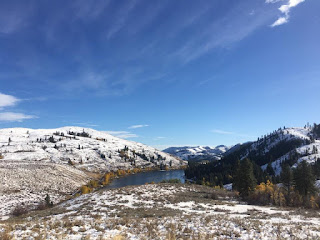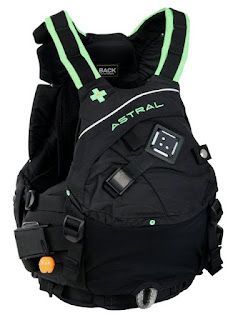Kayak Towing
There are many tow belts on the market and it is important to get one that you can work with. Some tow systems are mounted the the kayak and others are attached to the paddler. All tow systems should have a quick release. Given the various styles, I can really only speak of one. I have found it to be the easiest to use when I need it. My choice is the North Water Sea Tec Tow Line. It has been easy for me to use and when I daisy chain the tow line I can set it for various lengths.
So when is it time to use the tow belt. Well being a sea kayak guide, you are asked all the time to provide assistance to tired paddles. But this would be a bit of a misuse of an important rescue tool. It is not worn by guides to give clients free rides. Plus over working your guide in a non rescue situation is not a good idea. You want you guide to have plenty of strength I a real towing scenario were to develop. Some examples of when to tow.
1. An injured paddler needs assistance getting back to shore.
2. An incapacitated paddler is being supported by another kayak and a tow is needed to get to a safe location.
3. A paddler is stuck in a dangerous situation such as crashing waves on a rock wall. A rescuer paddler can assist them to safer waters with the use of a tow.
4. I have done this in the past. When you are leading a group across a channel with swift currents and one of the kayaks in the group is getting sweep too far off course. The tow can rejoin them with the group to set a new angle of attach to getting across the channel as one group.
So no where in the list did I list a paddler just being tired. In most cases were a paddler is tired you can try to adjust the group pace to relieve the stain on the tired paddler. Have good group dynamics and control as a leader is very important.
There are a few variations of towing you can use. When setting up a tow with a tow system (belt) I always make sure to attach to the other kayaks bow deck lines. The perimeter deck lines are attached in various places along the kayak. If for some reason one of the mounts breaks you are still attached to the deck line and do not lose the paddler being towed.
First I will introduce the Contact Tow. This is a simple town that can be used for a short distance and quick setup. The kayaker in need of a tow simply grabs hold of the the bow of the kayker providing the tow. If the kayak in need of assistance is positioned so that they are face to face to the rescue kayaker. Then communication is very easy between the two kayakers. This can be a good method if there are only two kayakers and one is sea sick. The sea sick paddler can rest by leaning on the the rescue kayak and the rescue kayaker can move them to shore.
Second is the Straight Tow. A rescue kayak is attached to the bow deck line of a paddler in need of assistance. If there is only two of you the kayaker needing assistance must be capable for maintain balance to prevent capsize. The length of the tow can be decided on a couple of factors. I have found if it is going to be a long tow, then I like to have a nice long length of line out (around 30 ft). If I am going to be doing a short distance quick tow I usually have about 15 ft of line for the tow. The next factor to consider is your direction of travel in relation to the sea. Are paddling into the waves or do you have a following sea. With a following sea (waves approaching from the stern) then I suggest 30 ft of tow line. Kayaking into the waves (wave approaching from the bow) then I go with about 15 ft. Make sure you have good communication with the paddler being towed. This means you may have to use a loud voice to project over wind and waves.
The third tow is the Rafted Tow. This is used when there are more than two kayakers and the kayaker in need is not able to maintain balance to prevent capsize. The set up is close to the Straight Tow except the tow line is passed through the bow deck line of the support kayak then attached to the kayaker in need of assistance. The will bring the bow of the two kayaks being towed together making it easier for the rescue kayak. The support kayak is to aid in balance and communication. Sea sickness often causes paddlers to be off balance, therefore this is a great tow for that situation.
The last town I am going to mention is what I call the In Line Tow. When you have a group of paddlers on the water and one of the kayakers finds themselves in need. This can help increase the speed and distance you can cover. The set up is the same as the Rafter Tow, except the kayak providing the tow now gets assistance. This in done by a fourth kayaker attaching to the bow deck line on the kayak towing the raft. This is set up like the Straight Tow. Now you have two kayakers providing power to the raft.
There are other ways of setting up tows, but my focus here was to introduce kayakers to the main tows that I have used and found successful. All these tows should be practiced with your paddler partners. Towing can be very exhausting, so pace yourself if you are in for a long tow. Remeber a tow belt is a rescue tool. Use it as it was intended and do not give out free rides.
Hope everyone was able to follow the diagrams I made. Please leave comments if there are any questions.
ANYWAY,,, I hope everyone is having a wondeful night.








Comments